Our neighbor Stan was a survivalist a gun nut and an excellent shot. He competed in numerous shooting challenges. My older brother and I loved to go over and see his collection of interesting gear. My dad who recently returned to the States after 10 years in Vietnam was happy to have him as a neighbor. He kept us out of trouble by keeping us educated and entertained in the same moment.
Stan was happy to show us how to make weapons caches and talk about the end of the world. He believed it was just a matter of time. Likely to happen in my generation. There was no one else like him in our neighborhood back in the 1970’s.
He’d already planned escape routes from his house, reinforced his doors, built a hidden doorway and collected precious metals. We played war-games on weekends which I thought was a lot cooler than just playing football and we listened to him talk about one day retiring to a remote location in Nevada.
The best thing I ever got from him was a severe interest in all things military. His passion for weapons, war games and war movies had a huge effect on me. This interest in turn eventually led me into reading history books and joining the Marine Corps like my older brother. We watched action drams of the 60’s, 70’s and 80’s; Zulu with Michael Caine, The Guns of Navarone, everything made with John Wayne in it, thrillers like the Final Option, Day of the Jackal, the Dogs of War but my favorite movie then was the Wild Geese with Richard Burton.
At 13 I really didn’t know what a mercenary soldier was.
Every time we sat to watch a movie, Stan would give us running commentary and explain some of its factual background. We watched a lot of the rough, macho type American War movies, but the English ones always seemed to have the educated soldier, who was refined yet capable and deadly. When the Geese came on-screen wearing their uniforms and shemaghs around their necks, I thought, ‘these guys seemed gallant yet very dangerous’.
In the school library I eventually saw a black and white picture of the SAS. I was leafing though a Life magazine and found the picture. My eyes were instantly drawn to the drivers face and the cool garments he wore. He had a look that was different from anyone I’d ever seen. Especially this picture, with his team, sitting in their vehicles somewhere in North Africa during WWII. Whatever it was they wear wearing on their heads, I thought, ‘wow’ these guys looked dashing. I later learned that what they wore on their heads was called a shemagh or some call it a keffiyeh.
The Shemagh is a really great multi-use travel essential item. We’ve seen it on foreign natives many times and many think it was the SAS soldier mucking around the Middle-East that really popularized it and brought it into our Western military culture.
But it was T.E. Lawrence, the short, blue-eyed, Irish-born nobody who became an officer and truly brought public awareness of it upon his return to England during World War I. Whether you believe he could ride, shoot and write well are up to you. If you get a good moment to do some reading, take a look at the Mint or his Seven Pillars of Wisdom, and I think you’ll appreciate how intelligent he was. He couldn’t turn a street corner in London without being peppered with requests for his autograph.
Pictures of him adorned in a keffiyeh were depicted in English and American newspapers and post-cards. This guy made wearing a shemagh look very cool. It added a bit of hipness to the tough guy exterior and added a greater mystique to the already mysterious soldiers of fortune. It seemed only they could pull it off.
What worked was the lay of the fabric broke the straight lines of the military uniform and focused the eyes on the rich texture. The colors, the stitching all added to the draw of owning one. And they worked well as a utility item. Snot rag, sand shield, wind-buffer, last-minute toilet paper. Use it well. Denizens of the Middle-East have used shemaghs for centuries and this simply made item can be used for a variety of things. Though it has been used ridiculously in fashion on the runways, that is not where I’m going with this. Our purpose here is to promote the practical uses for it.
Types
Shemaghs come in a variety of colors, design, textures and sizes. The best versions are generally made of a soft 100% cotton or cotton and wool that gets softer with age. I prefer the earthy colors, OD Green etc, to use in the outdoors but they do come in lots of patterns and bright neon colors like reds and purples if you prefer. Be aware of the cultural roots when choosing a color. Red or green checkering are popular with Muslim fundamentalist groups like the PLO or Hamas. Find the one that brings the attention you want.
Sizes
If you intend to wear it traditionally than be sure to purchase the larger sizes as a small will not work as well. Plus, larger persons will need larger sizes for better coverage. This is something to consider if you need to make a sling or even to make a compression bandage.
Also consider purchasing a larger model because it can extend to protect your shoulders and arms from the sun. Simply drape it over your head, like a hood, and see if the corner ends will reach far enough to your forearms or wrist; this measure should tell you it is long enough for most people. The smaller sizes are usually available as 36″ x 36″ and the larger ones should be about 40″ x 40″ or more.
What to look for
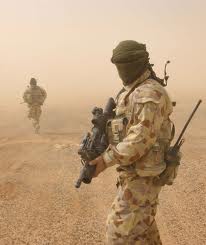
Overall Quality
The quality of the weaving should be tightly stitched and a good shemagh is real embroidery/hand-woven instead of with the pattern printed on. Things are changing though. Those made in China are now produced more cheaply by machine or hand. In regards to price, this is not always a bad thing. I prefer to purchase American made if I can and a lot of tactical companies offer pretty good stuff. Keep in mind that it’s a mixed bag when you’re ordering online.
If ordering online, check out the reviews online to determine that whatever you are buying has qualities that are similar or surpass what you’re familiar with. Now, cotton allows you maximum breathability then a polyester/cotton mix and a certain plasticity won’t allow you to sweat as freely. I’ve seen the 90/10 Poly/Cotton mix or the 100% Poly. Stay away from these. The natural fibers tend to dry faster and are less scratchy on the skin. Regardless of what you choose, this is an excellent piece of equipment to add to your survival gear. Check out the Book of Eli with Denzel Washington. He looks pretty cool, huh?
The US Military has been using it as well to keep their troops from getting sun burnt or out-of-the-way of dust. It’s not just the mercs that can get away with wearing it. If you wear it properly, you won’t look like a fool in your travels.
Some shemaghs come with printed instructions and there are numerous sites online that show a user how to drape it correctly. This is not just so it looks well, but so you get the maximum benefit of using it in your alien environment.
I’ve listed some of the more well know uses for it below and a big thanks to others for their contributions in listing uses.
- Bag-Spread it out flat and put your foraged items (berries, nuts, mint, etc) in the middle and tie the four corners together.
- Bandage-Protects a wound and assists in stopping bleeding.
- Blindfold-When keeping your site from being known cover the persons eyes.
- Cordage-You can cut it up in strips and use it for many things.
- Concealment-Wear over your face to cover your features, or hide personal belongings such as a camera or hip bag when entering an unknown area as a tourist.
- Cooling Rag or Dampener-Just soak in water .
- Eye Mask- Great for trying to sleep in the daytime, just cover your face.
- Eye Patch-If you sustain an injury to the eye(s), this can be wrapped around your face in order to keep out light or irritants like dirt.
- Filter- Fold up many times and filter your debris out before you pour your water. Also excellent for coffee grinds.
- Fire Tinder-Cut a strip and use for tinder.
- Food Cover
- Flag-Warning flag, Marking flag or Surrender flag.
- Gear Protector-Cover up sensitive items; mechanical items. Use to suppress jangly items to reduce sound if you don’t have duct tape.
- Hobo Pack
- Kitchen-Excellent for a pot holder, drying down pots and utensils and dishes.
- Lost Shoe-Good as a shoe or shoes for traveling over scree.
- Mark a Trail-Cut in pieces and tie to along your trail.
- Napkin-Handkerchief for blowing nose or wiping food off your face.
- Pad -Good for putting under a back pack for padding or to help a hotspot.
- Pillow-Gather up soft padding, like leaves or grass or even insert a shirt into it. Tie the four ends so it doesn’t collapse on you.
- Protection- Wrap it around your head to keep the cold off your ears and if you have a bald head like me, even better. Great to keep out dust or pollen from heavy or mild winds. Use to prevent sunburns and to stay cooler in the sun.
- Restraint- Use as handcuffs.
- Sarong- Cover up your waist.
- Signal Flag-Wave about to get someone’s attention from afar if you get lost camping, flag a taxi down. As kids, every summer our Dad took us to the redwoods. Hang it over your camp as a flag so others can spot it through brush. Something brightly colored like a white or red are excellent to carry in your bag.
- Sling-Useful for immobilizing a sprained or broken arm.
- Swaddling Cloth-Garment for your baby
- Tie Down-Cut into strips and tie extra gear to your backpack.
- Trouser Belt-You can cut of a strip to hold your pants up if you’ve lost a terrible amount of weight, or if you don’t have a belt.
- Toilet Paper-This is for final usage if you must.
- Tourniquet-Hopefully you’ll never need to do this but it is good to carry for that dangerous moment.
- Towel-Some of the larger models are just heavy enough to wick water off you and long enough to wrap around your waist after you’ve washed in a stream. Helps to dry your feet before you put your boots back on. Excellent for toweling off after a vigorous event.
- Waist Pouch-Tie to waist and drop nuts and berries in it.
- Weapon-Use as a blackjack (insert quarters or a large rock).
- Wiping Cloth-Good for wiping weapons down or lenses.
- Weather Vane-Hang on a stick and check the wind direction.
P.S. After not hearing from Stan for nearly 20 years my brother told me he bumped into him while running an errand. Stan mentioned he came home for his son’s wedding but had finally settled into a very remote place in Nevada. One of our readers mentioned the Wild Geese are not using shemaghs but scrim scarves, standard British issue during the cold war……shemaghs became more popular with the British army about the same time that scrim scarves stopped being issued.
*The views and opinions expressed on this website are solely those of the original authors and contributors. These views and opinions do not necessarily represent those of Spotter Up Magazine, the administrative staff, and/or any/all contributors to this site.

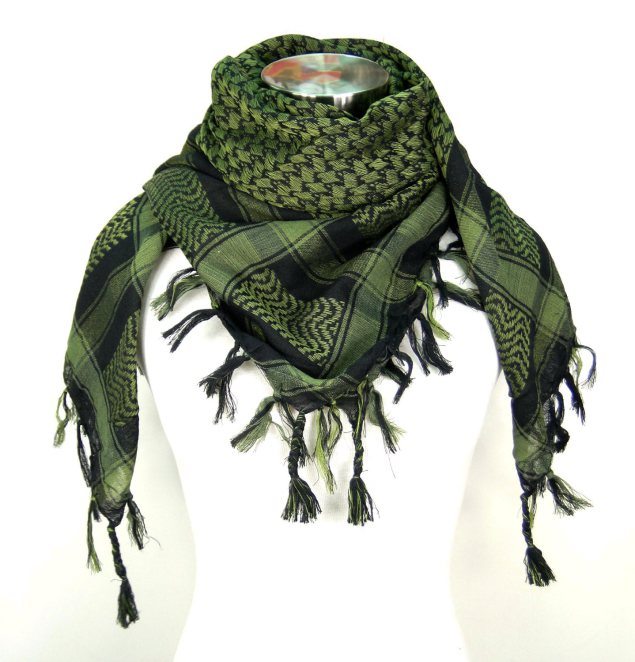
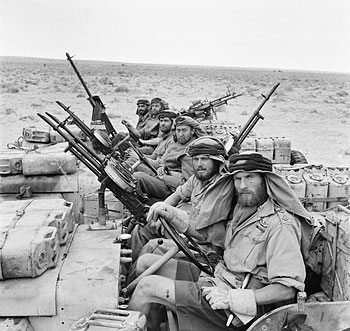
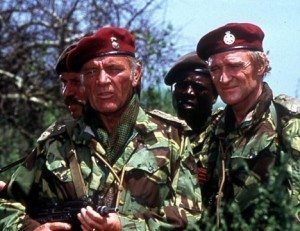
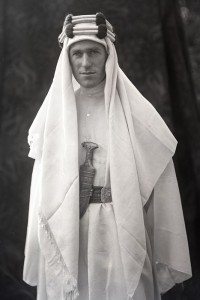
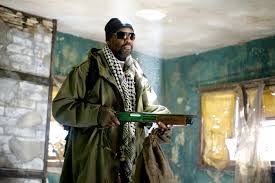
Hi,
I enjoyed reading this article, it’s not what I was looking for but that’s the joy of the internet.
Just to point out the very subtle differences between a shemagh and a kufiyah.
Shemagh’s are the heavier scarfs with tassels on, the bigger the tassels, the more important you are.
They can be found all over the Arabic world.
Kufiyah are lighter and culturally derive from the Eastern Mediterranean coast.
If you were looking for a good resource to list in the ‘What to look for section’ above, I’d suggest ‘hirbawiusa fullstop com’, as I believe they stock kufiyah from the last authentic factory in the world.
Thanks again, I’m off to see if you have any posts on wargaming anywhere in your blog.
Pete.
thanks
https://spotterup.com/modern-wargaming-and-the-roots-of-krieggspiel/